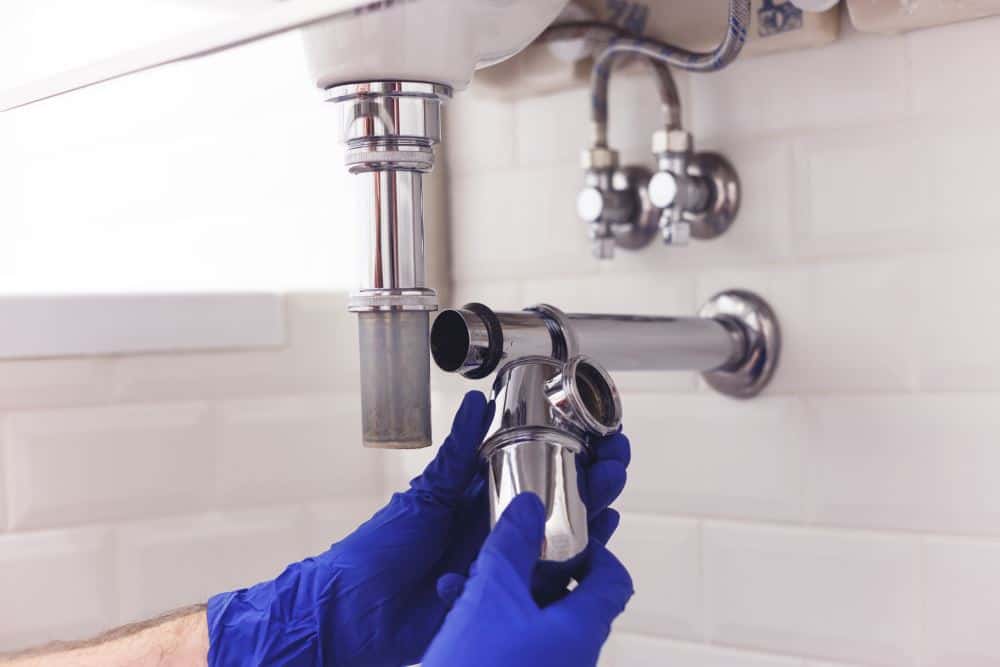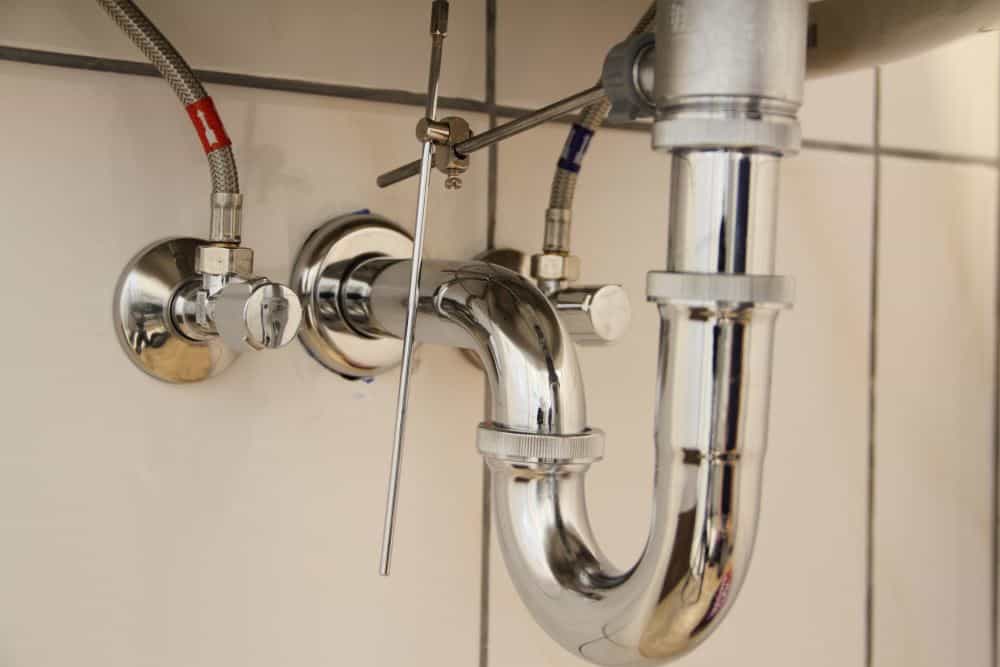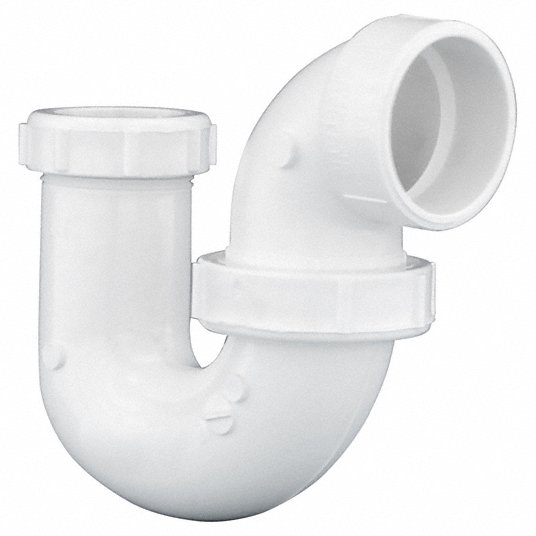Introduction
Beneath the sleek exteriors of our bathroom fixtures lies an intricate plumbing network designed to efficiently whisk away wastewater while safeguarding our living spaces from undesirable sewer gases. Two key players in this below-the-surface drama are the Bottle Trap and the P Trap. Both serve similar purposes, but their design, advantages, and best-use scenarios vary. Let’s decipher which is better for your needs.
Bottle Trap: Elegance Below the Sink
- The Design Insight:
- Resembling a bottle, this trap has a central cylindrical unit that holds water. The water provides a seal to prevent sewer gases from moving up the pipe and into the room.
- Where It Shines:
- Aesthetic Appeal: Common in contemporary bathroom designs due to its sleek and minimalist look. It’s especially fitting for pedestal sinks where plumbing is exposed.
- Space Conservation: Its compact design is an ideal choice for tighter spaces.
- Key Advantages:
- Easy Maintenance: Generally, bottle traps have a straightforward design that allows for simple cleaning and debris removal.
- Versatility in Material Choices: Various finishes and materials complement different bathroom designs.
P Trap: The Traditional Workhorse
- The Design Insight:
- Shaped like a horizontal “P,” this trap consists of a U-bend that retains water, creating a seal and connecting to a drainpipe that typically runs sideways into a wall.
- Where It Shines:
- Universal Application: A common sight in most households, P Traps are the go-to choice for a wide range of fixtures, including sinks, bathtubs, and showers.
- Key Advantages:
- Reliable Performance: Its design has been time-tested in many setups, proving its effectiveness in preventing sewer gas escape.
- Ease of Installation and Replacement: Being a standard in plumbing, P Traps are widely available and can be easily integrated into most plumbing configurations.
- Adaptable: Can be used in a variety of plumbing scenarios, both residential and commercial.
Bottle Trap or P Trap: Making the Choice
Your choice between a Bottle Trap and a P Trap often hinges on specific requirements:
- Design Preference: If you’re leaning towards a modern, minimalist look, especially with exposed plumbing, the Bottle Trap might be your pick.
- Functionality and Reliability: The P Trap stands out as a tried-and-true solution with broader applicability.
- Space Constraints: Compact spaces might benefit more from the slender design of the Bottle Trap.
It’s also crucial to consult with a plumbing expert and adhere to local regulations, as certain areas might have specific guidelines about trap installations.
Whether you opt for the Bottle Trap’s modern elegance or the P Trap’s reliable functionality, the primary goal remains consistent: ensuring a seamless wastewater exit while blocking any unwanted gases. By understanding the strengths and suitability of each, you can make an informed choice that complements both design aspirations and functional needs.
Overview Of Bottle Trap
A bottle trap is a fundamental component of the basin’s pipes.
It keeps the washbasin from becoming clogged with debris and keeps unpleasant odors at bay. The trap is usually an upside-down bottle-shaped stopper.
When you open the tap, water flows into the bottle trap, blocking any smelly gases.
The main advantage of a bottle trap is that it’s straightforward to install. You don’t need special skills or tools; it can be done in a few minutes.

Key Benefits:
- Easier to install: You don’t need special skills or tools; it can be done in a few minutes.
- It provides a better seal than a P-trap: It keeps the washbasin from becoming clogged with debris and keeps unpleasant odors at bay.
- Easier to clean: The bottle trap is usually an upside-down bottle-shaped stopper, which can be easily cleaned.
Overview of P Trap
A plumbing trap, sometimes called a P-trap, is a device used in plumbing to prevent the passage of sewer gas into the building and yet allow liquid to pass.
The trap consists of a curved pipe below the sink that dips down and back up.
This creates a U-shaped section of water that acts as a seal to stop sewer gas from entering the building.
At the same time, liquid can still flow freely through the pipe.
Key Benefits:
- Inexpensive: P-traps are affordable, making them popular for many homeowners.
- Fits a wide range of sink types and sizes: P-traps are available in various sizes and can be easily cut to fit any sink.

How Do They Work?
Now that you know the difference between these two traps, how do they work?
Bottle Trap:
So, how does a bottle trap work? It’s a larger-diameter vessel than the main drain pipe from the sink. This bowl is filled with new water as the water sprays down.
The trap is typically kept full with a specific quantity of water. The sewer gases are drawn into the system through the outlet pipes and reach the bottle trap when they travel up the system via the outflow pipes.
It is impossible to enter because the opening remains blocked, and waste and gases are not allowed to return. Bottle traps may be used for both aesthetic and functional purposes.
P Trap:
A water seal in the trap’s curve prevents sewer gases from backing up into your drain while allowing wastewater to pass. Solids will remain in the trap, where they can break down.
When the P-trap trap is opened, new water enters via the deflector block and flushes out any debris in the trap section of the pipe.
A P-trap may deteriorate over time, just like any other plumbing system component. Replacement might be required as a result of wear.

Where is a Bottle Trap Used?
Mainly, bottle traps are used in washbasins to collect debris. Using them with a shower is not advisable, as the water pressure may cause the bottle trap to leak.
Bottle Trap is easy to install, takes up less radial space under a waste outlet, and is ideal for pedestal-mounted basins where space is.
Where is a P Trap Used?
A P-trap is used in different applications, including:
- Bathroom Sink
- Showers
- Baths
- Washbasins
- Tubs
- Appliances that need drainage
It can be used in both residential and commercial applications.
P Traps are less expensive than bottle traps and take up less space, so they are a good choice if you are working with limited space.

Bottle Trap Vs. P Trap: Which Waste Pipe Should You Choose?
So, which is better – a bottle trap or a P-trap?
The answer to this question varies on your needs and preferences. Consider the following factors:
- Installation: If you want easy installation, go for a bottle trap.
- Size: A P-trap takes up less space than a bottle trap, so it’s a good choice if you work with limited space.
- Cost: A P-trap is less expensive than a bottle trap.
- Space: A bottle trap takes up more space than a P-trap.
- Functionality: Both traps work well to protect your drainage system from clogs and odors.
Ultimately, the decision comes down to personal preference. Consider your needs before choosing the bottle trap.
Other Common Types of Waste Pipes
There are many other types of waste pipes available on the market. Here are some of the most common:
- S-Traps: An S-trap (aka Shallow Trap) is a type of trap that is shaped like the letter S. It is used to prevent sewer gas from entering the home and, at the same time, to keep water in the trap so that it can act as a barrier to block odors. S-traps are most commonly used in sinks and bathtubs.
- Floor Trap: A floor trap is a type of trap that is installed on the floor. As it’s a floor trap, it’s usually used in applications without access to a P-trap. Floor traps are most commonly used in urinals and floor drains.
- Grease Trap: A grease trap captures grease, oil, and fats from cooking appliances such as stoves and fryers. Grease traps are typically made of stainless steel or plastic and are installed under the Kitchen sink.
- Gully Trap: A gully trap is a type of trap that is installed on the ground. Gully traps are most commonly used in outdoor applications such as storm drains and catch basins.
- Intercepting Trap: An intercepting trap is a type used to capture wastewater before it enters the main sewer line. Intercepting traps are typically installed in commercial and industrial applications.
- Q. Trap: A Q. trap is a type of water trap used to capture wastewater before entering the main sewer line. Q. traps are typically installed in commercial and industrial applications.
There are many different types of waste pipes available on the market. The P-trap is the most waste trap, but many other types of traps are available, each with its own benefits and drawbacks.

P Trap Vs. S Trap:
Both types of traps serve the same purpose: to keep sewer gas and odors from coming back into your home through the drain. However, there are some key differences between these two types of traps.
P-traps get their name because they are shaped like the letter “P.” They consist of a curve in the drain pipe that holds water, forming a seal that prevents sewer gas from escaping. P-traps must be appropriately installed to work correctly, as they rely on gravity to keep the water in place.
S-traps get their name because they are shaped like the letter “S.” Unlike P-traps, S-traps do not rely on gravity to keep the water in place. Instead, they use a mechanism that seals the trap shut when not in use. This makes S-traps less likely to leak than P-traps.
Ultimately, the decision between P traps and S traps comes down to personal preference and the specific needs of your home.
Installation Tips
Now that you know the basics of waste pipes, it’s time to learn how to install them.
Here are some tips that can help you get started:
- Get the right tools: To install a waste pipe, you’ll need a few tools, including a hacksaw, measuring tape, level, and plunger.
- Measure the area: Before you begin, measuring the area where you’ll be installing the pipe is essential. This will help you determine the best place to start cutting the pipe.
- Cut the pipe: Once you have the measurements, use a hacksaw to cut the pipe to the desired length.
- Fit the pipes together: Next, fit the pipes together using couplings and fittings.
- Secure the pipes: Finally, secure the pipes in place using brackets or clamps.
- Test the system: Once the pipes are installed, pouring a tiny amount of water down the drain is a smart way to test the system. This will help you ensure that the system is working properly.

Troubleshooting
If you’re having trouble with your waste pipe, there are a few things you can do to troubleshoot the problem.
- First, check to see if the pipe is correctly secured in place. If the pipe is loose, tighten the brackets or clamps.
- Next, check if there are any leaks. If you see any water leaking from the pipes, use a plunger to try and clear the blockage.
- Finally, if you’re still having trouble, call a plumber for assistance.
When to Call a Plumber
There are a few instances where it’s best to call a plumber instead of attempting to fix the problem yourself.
- First, if you’re unsure how to install the waste pipe properly, it’s best to call a professional.
- Second, it’s best to call a plumber if you’re having trouble clearing a blockage.
- Finally, if you see water leaking from the pipes, it’s best to call a plumber, as this could signify a serious problem.

Wrapping Up:
In the realm of plumbing, where functionality intersects with design, the importance of choosing a reputable and reliable manufacturer cannot be overstated. Hofen Sanitary Manufacturer has carved its niche in the industry, offering products that are the epitome of quality, design, and innovation. Here’s why partnering with Hofen is a decision you won’t regret.
Mastery in Customization:
- Tailored Solutions: At Hofen, we understand that every plumbing need is unique. This is why we specialize in producing customized products. Whether it’s a specific basin waste design or a unique drain stopper, Hofen ensures each product fits your exact requirement.
Quality that Speaks for Itself:
- Uncompromised Standards: Hofen places quality at the forefront of its priorities. Every product undergoes rigorous testing, including 100% product pressure testing, guaranteeing longevity and robust performance.
- Top-notch Materials: Using only the finest materials, Hofen products are not only durable but also aesthetically appealing, enhancing the overall appeal of your spaces.
Commitment to Innovation:
- Cutting-Edge Equipment: Hofen’s investment in state-of-the-art testing equipment and data analytics ensures that its products remain ahead of industry standards.
- Continuous Research & Development: Our commitment to innovation means that we are always in search of the next big thing in sanitary solutions, ensuring our clients get the latest and best products available.
Excellent Client Support and Communication:
- Personalized Service: Hofen values each client, ensuring personalized attention from the moment of inquiry to after-sales service.
- Open Channels of Communication: With Hofen, you are always in the loop. Our emphasis on clear communication ensures you are updated at every step and that any queries or concerns are addressed promptly.
Global Reach with a Local Touch:
- Wide Export Network: With satisfied clients from the United States to Australia, Germany to France, Hofen’s global footprint is expansive, yet every client feels the warmth of local, personalized service.
- Cultural Sensitivity: Despite our global reach, we understand and cater to the regional preferences and requirements of our clientele, making Hofen a truly global brand with a local heart.
Conclusion
Choosing Hofen Sanitary Manufacturer means opting for unparalleled quality, customized solutions, and a commitment to excellence that very few in the industry can match. So, when you think plumbing, think Hofen – where every drop counts and every product tells a story of perfection.

